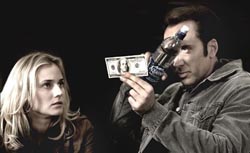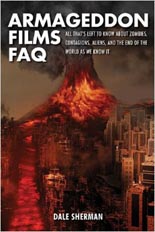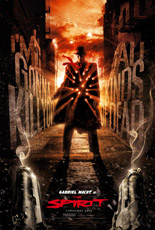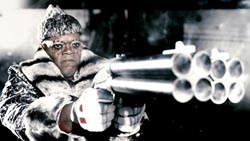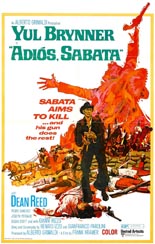
 Depending on who you ask, Adiós, Sabata may or may not be the second entry in the series that began with 1969’s Sabata and ended with 1971’s The Return of Sabata.
Depending on who you ask, Adiós, Sabata may or may not be the second entry in the series that began with 1969’s Sabata and ended with 1971’s The Return of Sabata.
The reason? Whereas the bookend films starred Lee Van Cleef as the master gunslinger, Adiós cast Yul Brynner as not Sabata, but Indio Black. The title change was just a cash-in. Still, it works logically enough as a sequel; under the Americanized name of Frank Kramer, Gianfranco Parolini directed all three and, more importantly, Brynner’s character is every bit the stoic badass Van Cleef was.
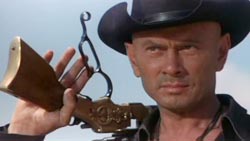 In 1867, Mexico is a hotbed of revolution, and some of its participants (some of whom sport Afros) aim to steal a chest full of gold from your average detestable Austrian colonel (Gérard Herter, The Big Gundown), he of the mustache and monocle. Never one to make an honest buck,
In 1867, Mexico is a hotbed of revolution, and some of its participants (some of whom sport Afros) aim to steal a chest full of gold from your average detestable Austrian colonel (Gérard Herter, The Big Gundown), he of the mustache and monocle. Never one to make an honest buck, Sabata Indio agrees to help.
“Can I go with you?” asks a boy in the village. “I make very good tortillas!”
As with the original Sabata, gimmicks play a large part of Adiós‘ appeal, from Indio’s sawed-off shotgun hiding a cigar compartment to one of his hombres being a man who hurls metal balls with pinpoint accuracy, using his foot. These touches and others lift this spaghetti Western above the fray. When gold is glimpsed, Parolini’s camera spins ’round and ’round; it’s easy to feel the joy with this one. —Rod Lott

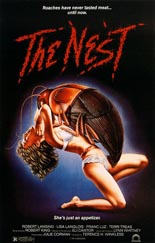
 Newspaper ads for
Newspaper ads for 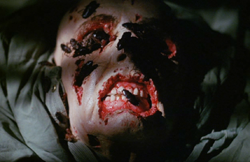
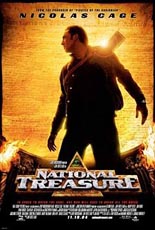
 What to do if you can’t get the rights to turn Dan Brown’s
What to do if you can’t get the rights to turn Dan Brown’s 